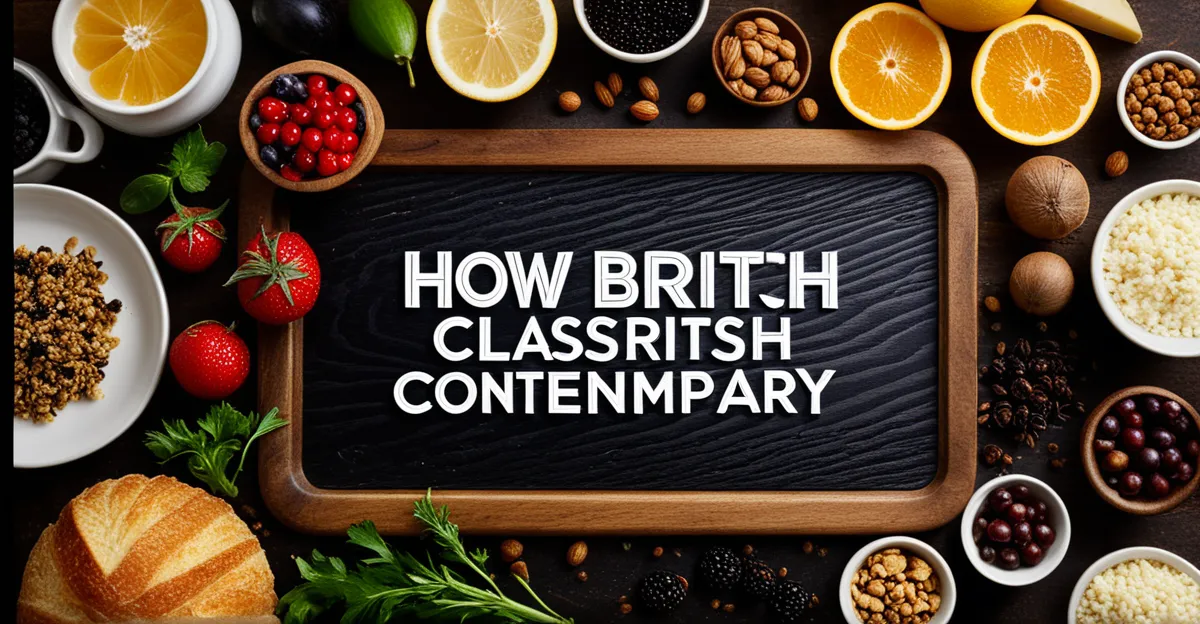Celebrating Classic British Ingredients in Modern Cuisine
Traditional British ingredients form the backbone of British cooking, offering a rich palette for chefs and home cooks alike. Root vegetables like parsnips, swedes, and carrots have been staples for centuries. Their earthy flavors bring heartiness to dishes while remaining versatile enough for modern twists. Game meats such as venison and pheasant add depth and a connection to Britain’s countryside heritage. These proteins often carry classic flavors that inspire creative cooking without losing authenticity.
Cheeses like Cheddar and Stilton exemplify heritage produce treasured in British food culture. Their sharp and creamy notes enrich sauces and bakes, grounding dishes in tradition even as cooks innovate. Native herbs such as thyme and rosemary bring unmistakable British character, offering subtle aromatic layers that complement other ingredients.
Also read : How Can Traditional UK Ingredients Revolutionize Modern Cuisine?
The enduring appeal of these classic flavors lies in their ability to balance nostalgia with innovation. They provide a solid culinary foundation from which contemporary British chefs innovate, marrying historical essence with fresh ideas. Embracing traditional British ingredients helps sustain a vibrant food culture that honors the past while exploring new frontiers.
Modern Recipe Ideas Using Traditional British Staples
Traditional British ingredients continue to inspire British recipe innovation through contemporary twists that honor heritage cooking while exciting modern palates. For example, take the humble beetroot, a root vegetable long celebrated in British cooking. Transformed into a creamy beetroot risotto, it introduces a vibrant color and earthy sweetness, offering a fresh take on classic risotto that still pays homage to British roots.
Also to read : What are the essential ingredients for a hearty steak and ale pie?
Similarly, smoked haddock—a staple fish in British food culture—can be reimagined in the form of tacos, blending heritage cooking methods like smoking with international presentation styles. This fusion allows British classic flavors to resonate beyond conventional dishes while maintaining authenticity.
Even desserts benefit from this creative approach. Rhubarb, another traditional ingredient, shines in a delicate rhubarb olive oil cake where its tartness pairs beautifully with the richness of olive oil, crafting a contemporary twist on British puddings.
These examples show how traditional British ingredients provide a reliable foundation for modern chefs and home cooks eager to experiment. Easy swaps and fusion ideas make it effortless to bring heritage cooking into everyday meals with a new, engaging flair.
Techniques for Blending Classic and Contemporary British Cooking
Blending classic flavors with modern techniques is vital to evolving British cooking. Traditional British ingredients like root vegetables or game meats gain new life through methods like roasting, pickling, and sous-vide. Roasting enhances earthy notes, adding caramelisation and depth, while pickling introduces acidity that brightens robust flavors. Sous-vide enables precise temperature control, maintaining the integrity of delicate cheeses or meats without overcooking.
Pairing these heritage ingredients with international influences creates unique dishes. For example, smoked haddock—an emblem of traditional British ingredients—can be combined with Mexican spices or Asian herbs to craft exciting fusion meals that respect their origins. Presentation also plays a role; plating classic components with contemporary flair can elevate familiar dishes for modern dining experiences.
Ultimately, mastering culinary techniques that marry the old with the new enriches British cooking. By applying these methods, chefs and home cooks unlock bold, inventive results while honouring the timeless appeal of traditional British ingredients. This approach sustains the vibrancy and relevance of British culinary culture in a globalized food landscape.
Flavor Pairing and Ingredient Matchmaking
Understanding British flavor combinations is essential to crafting dishes that honor tradition while appealing to modern palates. Classic pairings like lamb and mint or cheddar and apples showcase how simple, harmonious matches have defined British cooking. These combinations balance richness with freshness, creating enduring appeal.
Modern taste profiles encourage expanding this foundation by introducing global seasonings and spices. For example, pairing sharp Cheddar with a tangy chutney spiced with cumin or combining robust game meats with warming cinnamon or star anise offers exciting contrasts without overshadowing the heritage ingredient. This approach refreshes traditional staples, making them vibrant and versatile.
Building bold new recipes involves thoughtful ingredient pairing. Start with a familiar British staple—such as root vegetables or native herbs—and trial complementary flavors from different cuisines. The goal is to enhance rather than mask the classic flavors. This technique allows chefs and home cooks to innovate confidently, respecting the timeless qualities of British ingredients while embracing adventurous, modern combinations.







